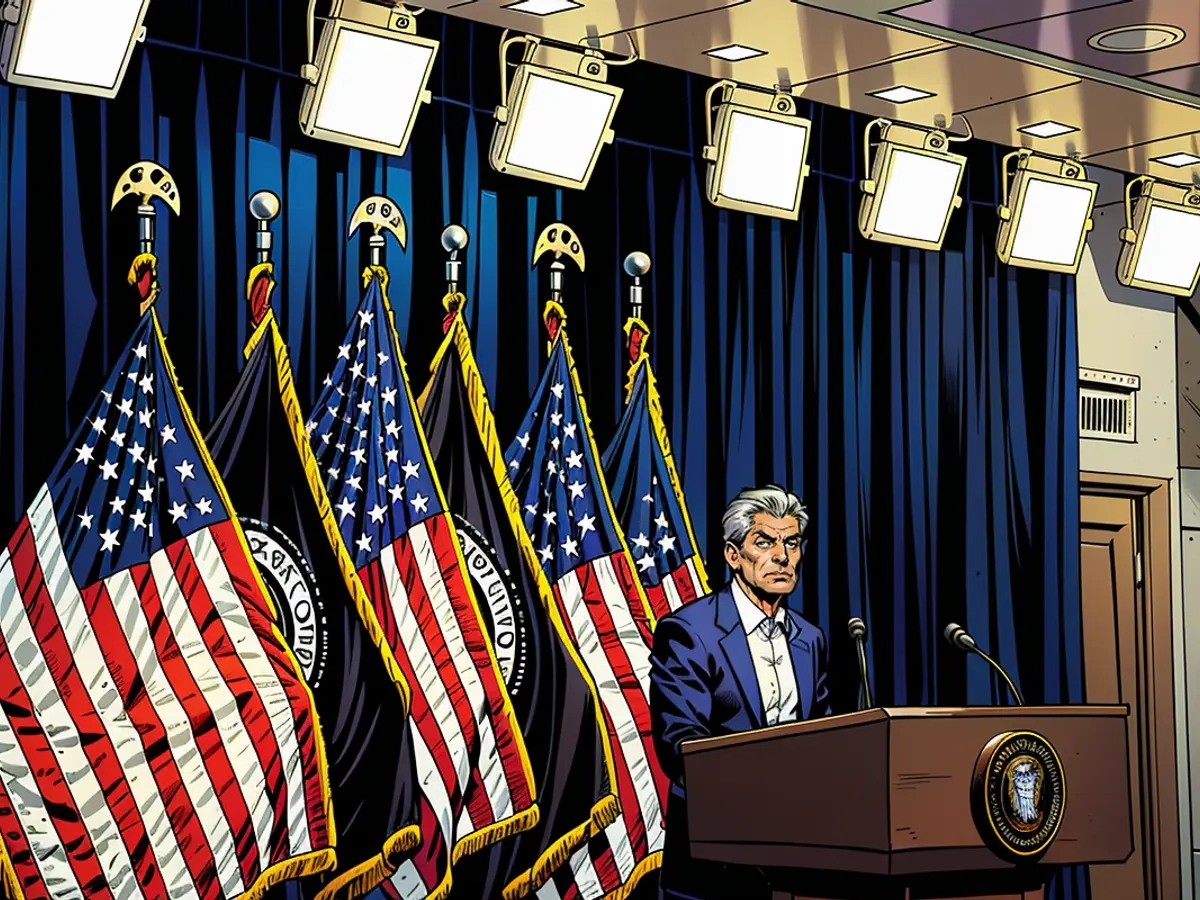This week, the Federal Reserve took several investors by surprise with an extensive interest rate reduction. Forecasting the subsequent action will prove challenging.
What set this scenario apart?
The 0.5 percentage point reduction in interest rates that the Federal Reserve ultimately implemented was not in line with traders' expectations a week prior. Instead, they were widely anticipating a 0.25 percentage point decrease, as suggested by the fed funds futures, which reflect market expectations for the central bank's actions during upcoming meetings.
As the Fed's two-day policy meeting drew near, by Friday, the probability of a 0.5 percentage point reduction versus a 0.25 percentage point reduction was evenly split at 50-50. However, by Monday, the odds had shifted slightly towards a 0.5 percentage point decrease, although not to the extent typically observed just before a meeting, indicating lingering uncertainty about the Federal Reserve's intentions.
Investors' uncertainty regarding the Federal Reserve's impending decision may have been a reflection of the internal uncertainties amongst officials ahead of the meeting. Nevertheless, this doesn't necessarily mean that future rate decisions will be challenging for the markets to forecast.
Powell: Federal Reserve officials left the size of the rate cut open before the September meeting
During a significant speech at the Federal Reserve's annual economic symposium in Jackson Hole, Wyoming, last month, Powell declared that it was "time to lower interest rates." He, however, did not specify the magnitude or pace of the cuts.
On Wednesday, Powell confessed to this oversight, acknowledging that central bank officials also "left it open before the blackout period." Fed officials are prohibited from discussing monetary policy during the blackout period, which extends before and after each meeting.
In the days leading up to the Federal Reserve's meeting this month, two significant economic reports were released: the Consumer Price Index (CPI), a measure of price increases for consumer goods and services, and the Producer Price Index (PPI), which charts prices at the wholesale level for businesses.
The CPI report indicated that annual inflation decreased to 2.5% in August, the least substantial increase since February 2021. Meanwhile, the PPI report showed that wholesale prices slowed in August to a rate of 1.7% from an annual increase of 2.1% in July.
This data reportedly prompted some Federal Reserve officials to reconsider their positions. For instance, Fed Governor Christopher Waller stated that the inflation figures motivated him to advocate for a 0.5 percentage point reduction, although he previously believed a 0.25 percentage point reduction would be appropriate.
Even as the Federal Reserve was set to announce its decision, many top economists at financial institutions still believed that the traditionally cautious Powell would opt for a 0.25 percentage point reduction.
The Federal Reserve's landmark 0.5 percentage point reduction was not unanimously agreed upon
Ultimately, all but one of the Fed's 12 monetary policy committee members supported the 0.5 percentage point reduction that traders had been anticipating. This marked the first instance in over two years where an interest rate decision was not unanimous.
The lone dissenter, Fed Governor Michelle Bowman, opposed a larger 0.5 percentage point reduction, arguing that it could unnecessarily boost demand and potentially rekindle inflation. Her stance may hint at the internal discussions that officials might have had during future meetings.
Bowman also expressed concern that the larger reduction approved by the committee could be perceived as a premature victory on the price stability mandate. However, Powell stressed that no one was celebrating at the meeting, stating, "We're certainly not saying mission accomplished or anything like that."
At this month's meeting, Powell is likely to have exerted a "stronger than usual influence" to convince committee members to approve a more substantial reduction. Powell sought to downplay speculations that this was a catch-up move, asserting, "We don't believe we're behind."
With the cutting cycle now underway, officials now face more intricate decisions. Waller outlined his thoughts on potential next steps.
"If the data remains stable, you could envision a 0.25 percentage point reduction at the next meeting or even the one following," he said. However, if labor market data deteriorates or inflation data continues to underperform expectations, a 0.5 percentage point reduction could be warranted at the subsequent meeting. On the contrary, if inflation accelerates, Waller argued that there is a strong case for not reducing at all.
This reveals that there will always be some degree of uncertainty surrounding Federal Reserve decisions until further economic data becomes available.
"But we do not expect Federal Reserve officials to intentionally obfuscate," said Husby.
The Federal Reserve's decision to lower interest rates by 0.5 percentage points significantly impacted the business sector, as lower interest rates often stimulate economic growth and investment. This move was seen as a cautious response to the recent slowdown in inflation and wholesale prices, as indicated by the Consumer Price Index and Producer Price Index reports.
The lack of a unanimous vote among Federal Reserve officials on this interest rate cut also reflects the ongoing debates within the economy, highlighting the complexity and importance of monetary policy decisions in shaping the broader economic landscape, including the nation's business environment and overall economy.








